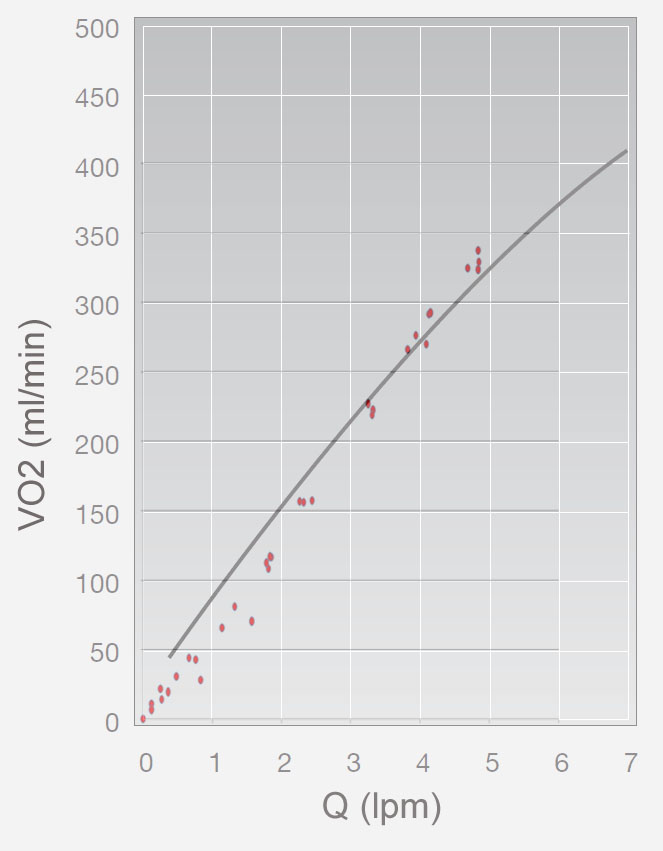Oxygen transfer: Comparison with Quadrox D.

The relationship between oxygen transfer and blood flow through the oxygenator is compared with the published data for a Quadrox 'D' in this figure.
The Quadrox 'D' data were obtained under ISO 7199 conditions and the virtual data from a similarly characterised 'virtual' patient.
However, unlike the Quadrox data, the 'virtual' data were obtained under dynamic conditions following a cardiac arrest. As a result, the characteristics of the incoming mixed venous blood varied during the course of the experiment.
At the beginning of the experiment, the patient was rendered asystolic by the supervisor. Immediately after the onset of asystole, VA ECMO was initiated and the blood flow was progressively increased from 0 to 5 lpm over the course of three minutes. The axes of the plotted data were then adjusted to match those of the published data for the Quadrox 'D' oxygenator and super-imposed on the published data.
As can be seen, there is generally good agreement between the two data sets. The differences in the oxygen transfer rates are explicable on the basis of the variation in the mixed venous oxygen and carbon dioxide content which occurred during the course of the experiment. (In particular, the SVO2 was greater than 70% when blood flow was between 0 and 2 lpm - which would have the effect of reducing instantaneous oxygen transfer rates at these blood flow rates.)
